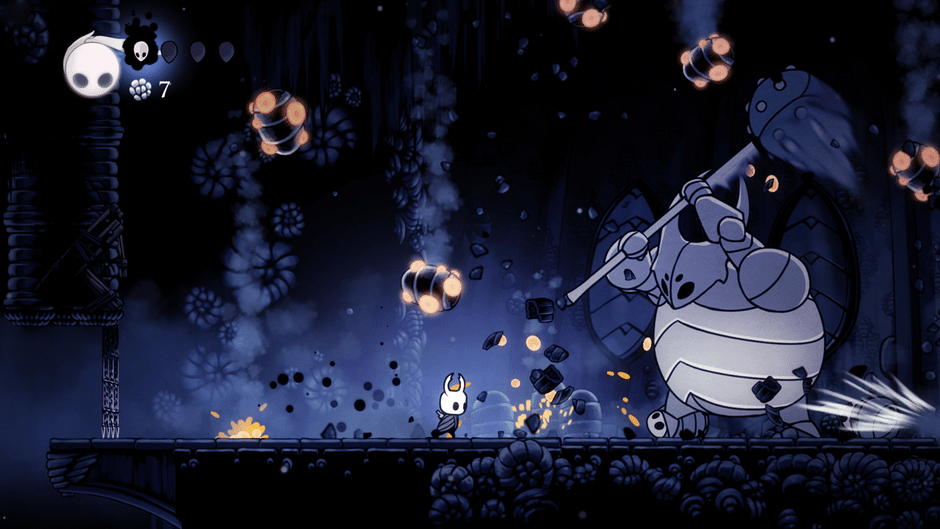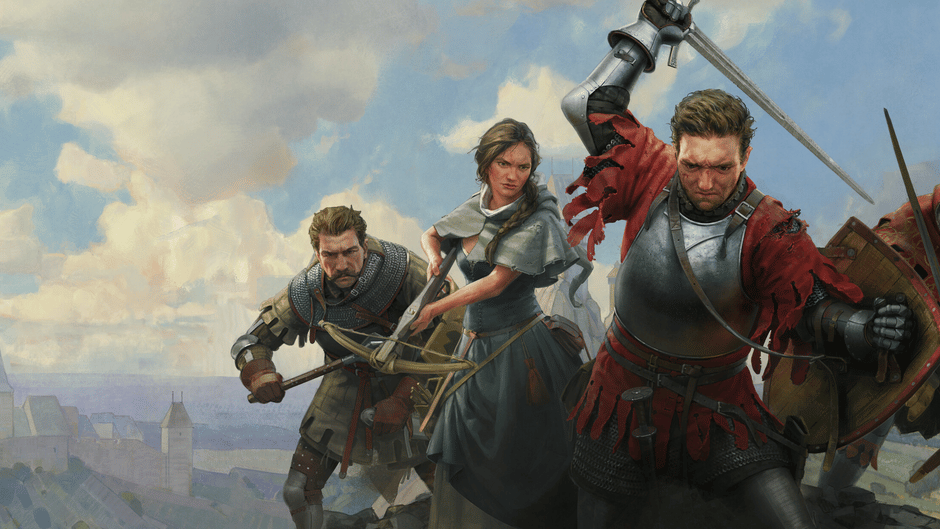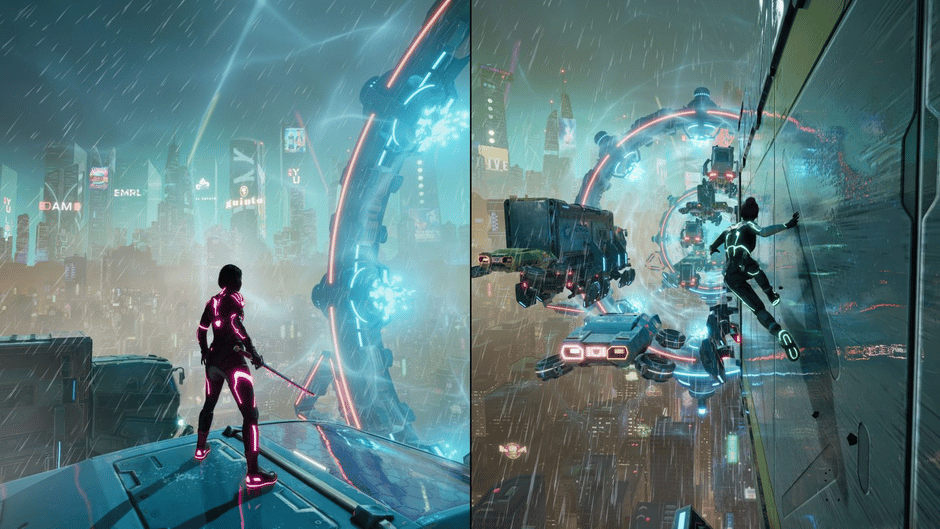Hollow Knight vs. Celeste: Battle of the Indie Darlings
In the ever-expanding world of indie games, two titles have risen to legendary status, captivating players with their challenging gameplay, stunning visuals, and emotional depth. Hollow Knight and Celeste, both released in the late 2010s, have become benchmarks in their respective genres.

In the ever-expanding world of indie games, two titles have risen to legendary status, captivating players with their challenging gameplay, stunning visuals, and emotional depth. Hollow Knight and Celeste, both released in the late 2010s, have become benchmarks in their respective genres. As we approach 2025, these games continue to be celebrated and compared by gamers and critics alike. Let's dive into a comprehensive comparison of these indie darlings, exploring what makes each unique and why they've left such an indelible mark on the gaming landscape.
Setting the Stage: Two Worlds Apart
Hollow Knight, developed by Team Cherry, plunges players into the depths of Hallownest, a sprawling underground kingdom teeming with bizarre insects and ancient secrets. This Metroidvania-style game offers a non-linear experience, allowing players to explore its intricate pathways at their own pace. On the other hand, Celeste, created by Matt Makes Games, takes players on a vertical journey up the titular Celeste Mountain. This precision platformer focuses on overcoming increasingly difficult challenges as the protagonist, Madeline, battles both the mountain and her inner demons.
Gameplay Mechanics: Precision vs. Exploration
At their cores, Hollow Knight and Celeste offer vastly different gameplay experiences. Hollow Knight combines tight platforming with a robust combat system, encouraging players to master the art of nail-wielding and charm combinations. The game's non-linear nature means players often find themselves backtracking and discovering new areas as they gain abilities. Celeste, in contrast, is all about pixel-perfect platforming. With a simple set of moves - jump, dash, and climb - players must navigate through increasingly complex levels that test both reflexes and problem-solving skills.
Narrative Approaches: Subtle vs. Overt
The storytelling in these games is as different as their gameplay. Hollow Knight presents a somber, mysterious narrative that players must piece together through environmental storytelling, character interactions, and scattered lore. The history of Hallownest unfolds slowly, rewarding curious players with a rich, melancholic tale. Celeste, on the other hand, wears its heart on its sleeve. The game directly addresses themes of anxiety, self-doubt, and personal growth through Madeline's journey up the mountain. The narrative is woven seamlessly into the gameplay, with each new challenge reflecting Madeline's mental and emotional state.
Visual Artistry: Hand-Drawn vs. Pixel Art
Both games are visual masterpieces in their own right. Hollow Knight boasts a hand-drawn art style that brings its gloomy, underground world to life with intricate details and a muted color palette. The character designs, from the stoic Knight to the various quirky bugs encountered, are both whimsical and haunting. Celeste opts for a vibrant pixel art style that, while simpler at first glance, is packed with personality. The game's changing environments reflect Madeline's journey, with each new area bringing its own distinct visual theme and color scheme.
Musical Scores: Atmospheric vs. Emotive
The soundtracks of both games play crucial roles in creating their respective atmospheres. Hollow Knight's score, composed by Christopher Larkin, is a haunting, orchestral masterpiece that enhances the game's sense of mystery and melancholy. The music shifts subtly as players move through different areas, adding depth to the world of Hallownest. Celeste's soundtrack, created by Lena Raine, is more dynamic and electronic, evolving with the gameplay to mirror Madeline's emotional journey. The music in Celeste is not just background; it's an integral part of the game's emotional resonance.
Challenge and Accessibility: Different Approaches
Both Hollow Knight and Celeste are known for their high difficulty levels, but they approach challenge and accessibility in different ways. Hollow Knight's difficulty comes from its combat encounters, particularly its boss fights, and the potential for getting lost in its vast world. The game demands patience and skill, with death often resulting in a long journey back to recover lost resources. Celeste, while equally challenging, offers more immediate respawns and a range of accessibility options. Players can adjust game speed and even toggle invincibility, allowing a wider range of players to experience the story.
Replayability and Content: Depth vs. Precision
When it comes to replayability, both games offer plenty of reasons to return. Hollow Knight's non-linear nature means that subsequent playthroughs can feel quite different, with players discovering new areas or tackling bosses in a different order. The game also offers several endings and a wealth of optional content, including challenging boss rushes and hidden areas. Celeste's replayability comes from its precision platforming and the drive for self-improvement. Each level has collectible strawberries that require expert maneuvering to obtain, and unlockable B-Side and C-Side versions of levels offer extreme challenges for dedicated players.
Community and Legacy: Enduring Popularity
As we approach 2025, both Hollow Knight and Celeste continue to boast active and passionate communities. Hollow Knight's depth and lore have spawned countless theory videos, speedrunning competitions, and fan art. The anticipation for its sequel, Silksong, has kept the community buzzing with excitement. Celeste, too, has a dedicated following, with players continually pushing the boundaries of what's possible within its precise platforming framework. Both games have inspired countless indie developers, influencing the design of numerous titles in the years since their release.
Impact on the Indie Scene
The success of Hollow Knight and Celeste has had a profound impact on the indie game scene. They've shown that small teams can create experiences that rival or surpass those of major studios, both in terms of gameplay and emotional depth. These games have raised the bar for what players expect from indie titles, encouraging developers to push boundaries in storytelling, art design, and gameplay mechanics. Their success has also highlighted the importance of polish and attention to detail in indie game development.
The Verdict: Two Sides of the Same Coin
Comparing Hollow Knight and Celeste is like comparing apples to oranges - both are fruits, but they offer entirely different flavors. Hollow Knight provides a vast, mysterious world to get lost in, with combat and exploration at its core. Celeste offers a more focused, emotionally resonant experience centered around overcoming personal challenges. Both games excel in their respective areas, showcasing the diversity and potential of indie game development.
Looking to the Future
As we look towards the future of indie gaming, Hollow Knight and Celeste stand as shining examples of what's possible when passionate developers pour their hearts into their creations. With Hollow Knight: Silksong on the horizon and the gaming community eagerly awaiting news of Matt Makes Games' next project, it's clear that the legacy of these games will continue to influence the industry for years to come.
Conclusion: A Testament to Indie Excellence
In the end, the "battle" between Hollow Knight and Celeste isn't about determining which is better, but about celebrating the incredible diversity and quality present in the indie game scene. These games represent two different approaches to game design, both executed with extraordinary skill and vision. Whether you prefer the vast, mysterious world of Hallownest or the personal, emotional journey up Celeste Mountain, both games offer experiences that will stay with you long after you've put down the controller. As we continue to see the influence of these titles in games released even in 2025, it's clear that Hollow Knight and Celeste have earned their places as true indie darlings, setting a standard for excellence that will inspire developers and delight players for years to come.





